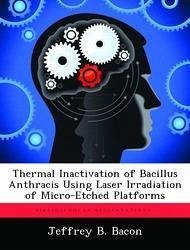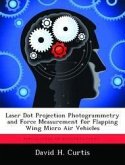The purpose of this research was to determine the probability of kill for a thermal inactivation strategy for use against biological agents; specifically the resilient endospore of Bacillus anthracis (Ba). The effort focused on short durations (milliseconds to several seconds) and temperatures (300 to 1300 K) simulating the periphery effects after an explosion generated by conventional munitions. For an improved statistical counting, applied microlithography techniques were used to produce micro-etched glass platforms consisting of 532 circular sample wells, evenly spaced, with dimensions of 50 1/4m in diameter and approximately 3 1/4 in depth. Small carbon black radiators, which provide fast heating / cooling rate and confined temperature distribution, were produced by populating the etched wells with fine carbon particles of less than one 1/4m for good contact with the spores. In order to prevent the carbon black from oxidation at high temperatures in air, a multifunctional sol-gel coating was designed to cover both the hydrophilic glass surface and hydrophobic carbon surface.








